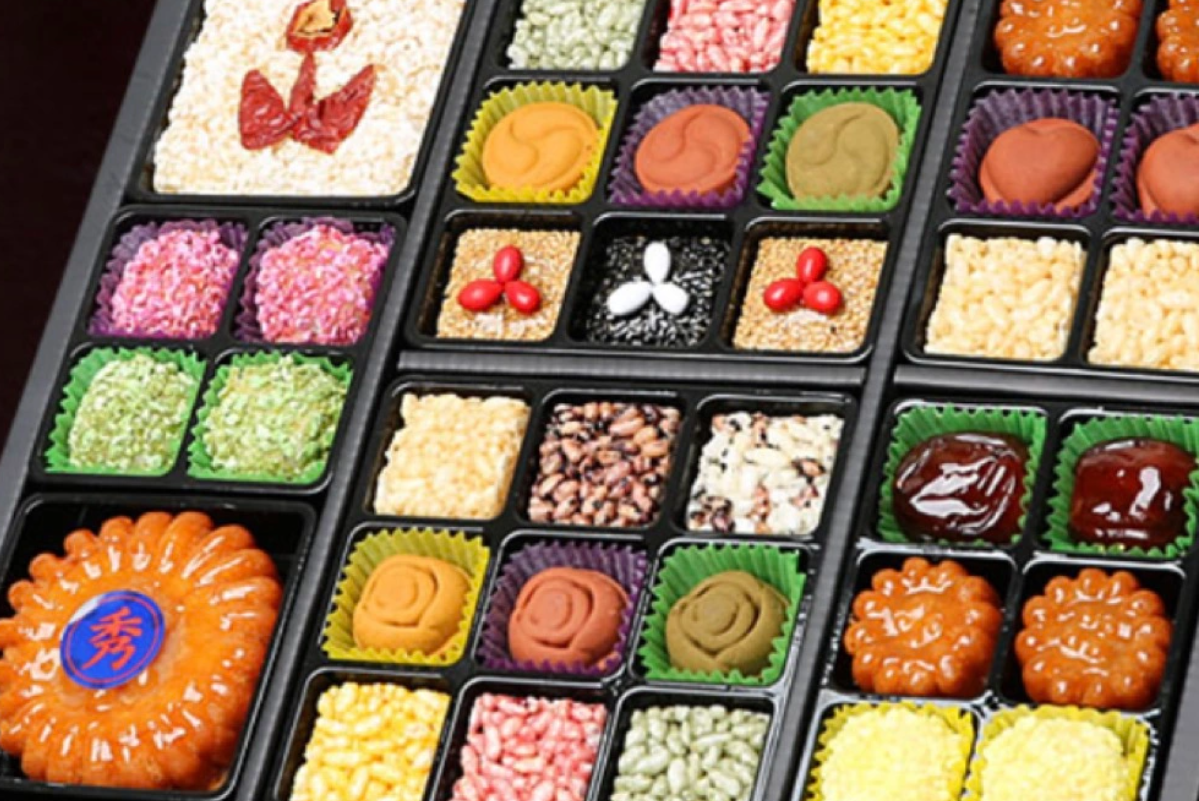Traditional Korean desserts have a long and rich history. Today, I will introduce five traditional Korean desserts that are the most famous and delicious and must be eaten when traveling to Korea.
Yugwa
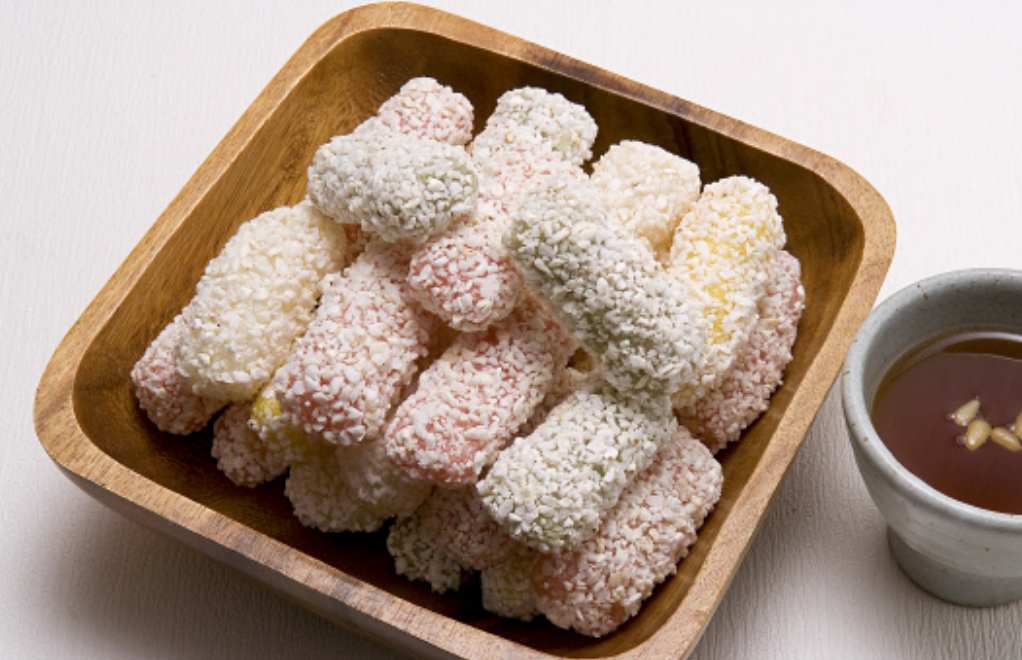
Yugwa is a traditional Korean dessert that has been around since ancient times and is made by frying it in oil. Hence the name ‘oil yu’. While most Western snacks are made with wheat flour and are often baked in the oven, Korean snacks are usually made with rice.
The identity of Yugwa is that it is soft and crispy on the outside and has a caramel-like chewy texture that seeps into the syrup when you chew it. The inside of the cookie is connected like crumbly threads, so when you chew the part of the cookie along with the chewy syrup, you can hear the sound of chewing in your head. When you crunch through the sweet meat and the crisp, empty shell, the caramelized syrup melts in your mouth and blends well with the broken shell, giving it a luxurious taste.
The taste itself is sweet and delicious, but the confectionery part of the food is only an auxiliary role of the taste, and it is a food that enjoys the change in taste of how the caramelized corn syrup is applied each time it is chewed and melted along with the broken shell and solids. The fact that it is a food that has been passed down since the Goryeo Dynasty, when tea culture was developed, also contributed to the pursuit of such a complex taste. Sweets that are so delicate that you can feel the taste every time you chew them, like yugwa, go better with tea, which has a lighter taste than coffee or alcohol.
Taffy
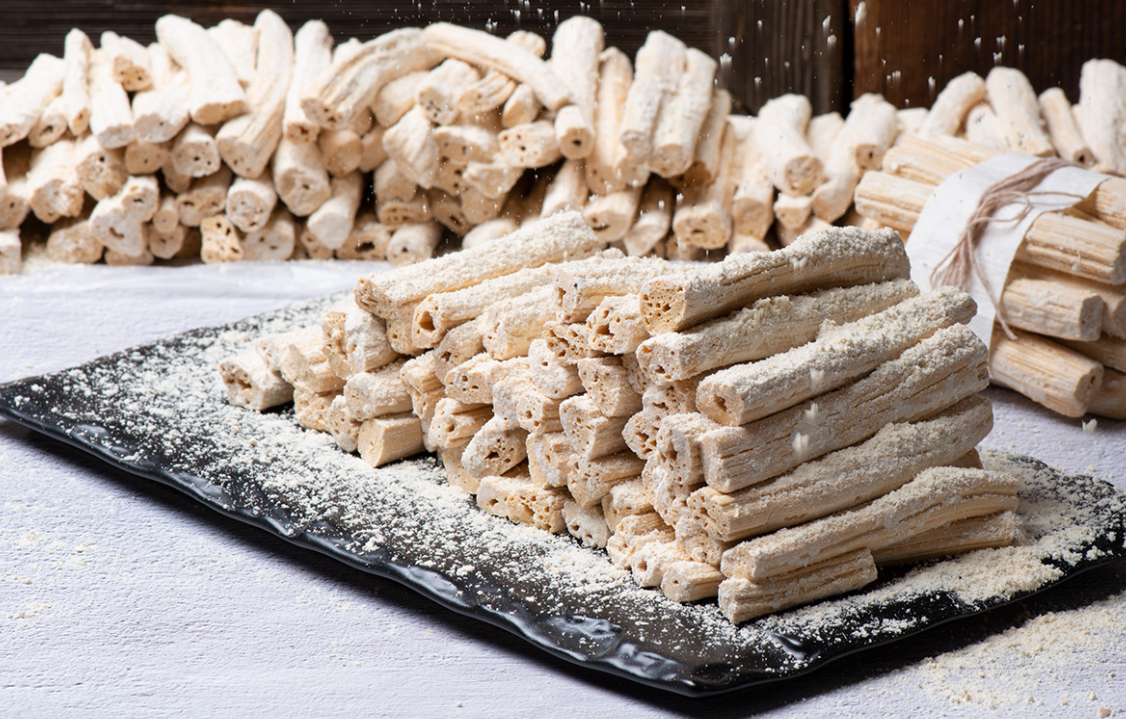
Taffy is a traditional Korean snack made by fermenting godubap (steamed grains) in malt water. After that, put it in a bag, boil the juice, and let it harden.
If taffy is made according to the standard method, no sugar is added during the making process. Nevertheless, the reason it tastes sweet is because the amylase contained in malt hydrolyzes the starch in godubap into maltose. The process of ‘fermenting rice’ is the process of extracting maltose.
Well-hardened corn taffy is extremely hard, so a lump can be used as a blunt weapon. It’s not a joke; it’s really solid. Even now, some oriental medicine stores sell sweet taffy mixed with medicinal herbs under the name of yak taffy, but it is so hard to chew, and when stored in the freezer, the frozen sweet taffy makes a clanging sound when gently hit. Maybe that’s why I rarely eat raw taffy as is.
You can eat it by scraping it thinly with a plane and attaching it to a wooden stick, breaking it with a hammer, and melting the small pieces in your mouth, like eating hard candy, or by eating it as ‘bultaengi’, a common name made by mixing a little water into the hardened sweet potato to make it soft. In particular, well-made bultaengi is so soft that it reminds me of injeolmi, or marshmallow. Alternatively, it would be hardened to the size of a person’s forearm and given out as prizes in lottery machines at stationery stores or in arcade machines under the name of club taffy. It was used as a symbol rather than for food.
Yumilgwa
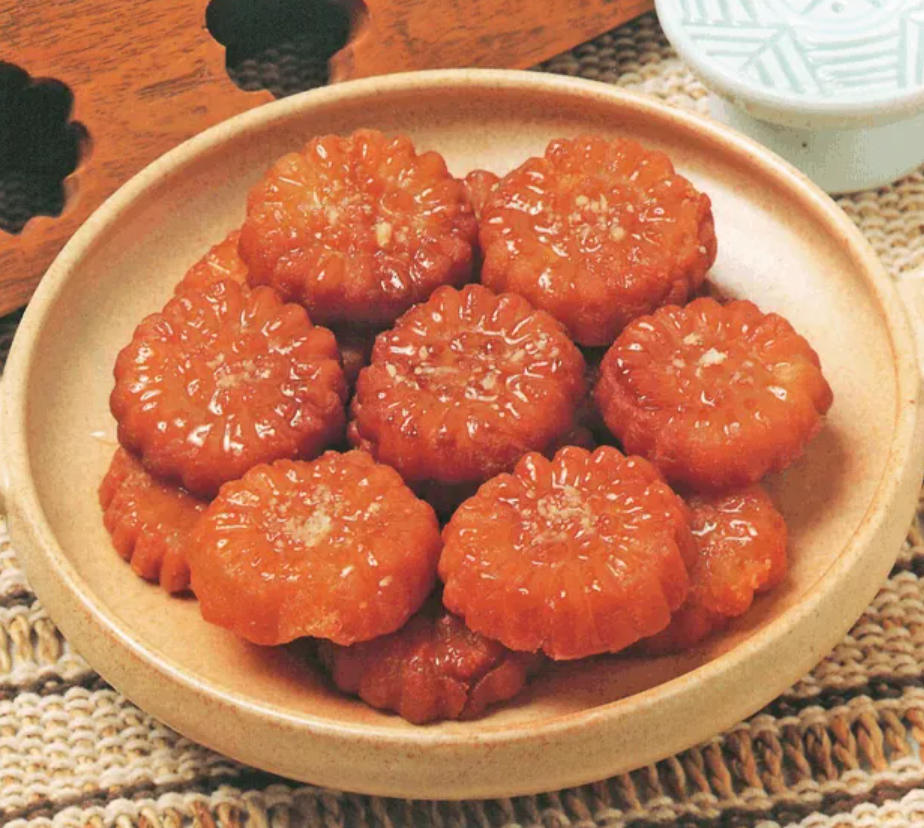
Yumilgwa was served instead of fruit on the ancestral rite table, and it was called Yumilgwa because it was a fake fruit made by making flour dough into the shape of a fruit and soaking it in oil. Although it is usually used as the same word as Yugwa, Yakgwa types are classified as Yumilgwa, and types such as Gangjeong, Sanja, and Binsagwa are distinguished as Yugwa. The ingredients are also different in that Yumilgwa uses wheat flour and buckwheat flour, while Yugwa uses glutinous rice flour.
A representative example of the Yumil family of traditional korean desserts is Yakgwa. The method of making Yakgwa is to first knead flour with oil, then mix it with honey and alcohol, knead it again, put it on a Yakgwa plate with various shapes and patterns, stamp it, or cut it into squares of a certain thickness or size and fry it in oil. Soak the yakgwa in honey or grain syrup mixed with ginger juice and cinnamon powder. When the honey water has sufficiently soaked into the inside, take it out and place it in a well-ventilated, shady place.
If you are curious about Yakgwa information and recipes, please refer to this article.
Gangjeong
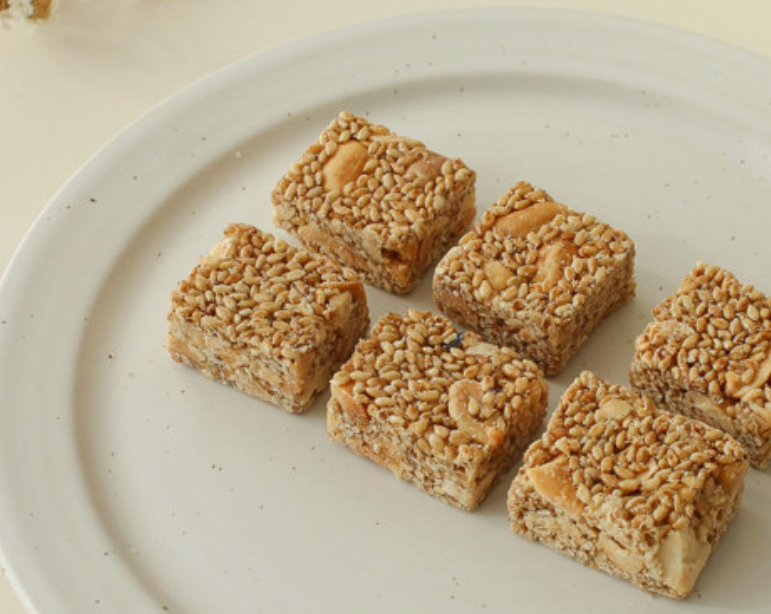
Gangjeong is a traditional Korean dessert famous for confectionery that is served on banquet tables, large tables, and ancestral rite tables, along with medicine and snacks. It is made by kneading glutinous rice flour with alcohol, kneading it, cutting it into various shapes, drying it in the shade, frying it in oil, and coating it with honey. It is hollow and has a sweet and mild taste. Depending on the ingredients and shape of the meat, it is classified into soybean paste, seunggeomcho paste, sesame paste, songhwa gangjeong, cinnamon gangjeong, sebanggangjeong, bell pepper gangjeong, pine nut gangjeong, black sesame paste, etc.
Gwapyeon
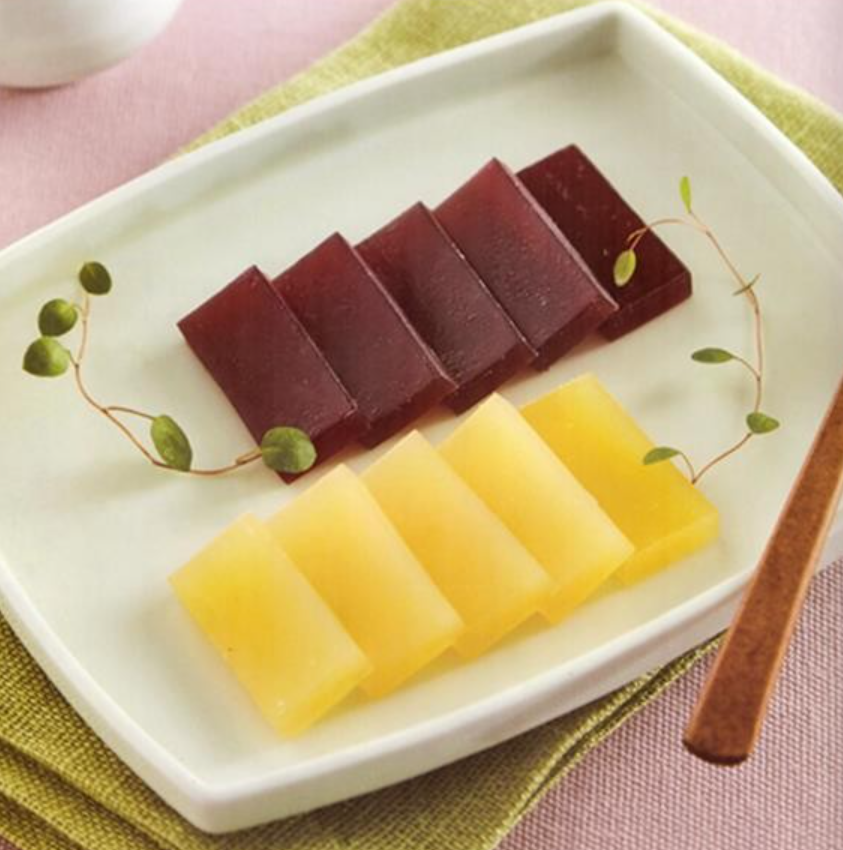
Gwapyeon is a food made by boiling fruits or berries, mixing the filtered juice with starch powder or adding sugar or honey, boiling it to coagulate, pouring it into a bowl, cooling it, and cutting it into appropriate sizes. It is similar to jelly and can be considered a jelly made from fruit juice. The fruit used as ingredients is diverse, including cherry, apricot, Schisandra chinensis, quince, grape, wild grape, strawberry, bokbunja, hawthorn, blueberry, citron, ginger, and persimmon.
In rare cases, it is made from pumpkin. Apples, pears, and peaches were not used in the traditional way because their color and texture were not good when heated, but if you search, there are recipes, so it seems that in modern times, they are made to taste. It is similar to Turkish lokum in that it uses fruit juice and starch.
It has a subtle fruity scent but is not overtly refreshing or sour. The texture is like jelly. It is not called fruit jelly; there is no reason to elaborate. It is hardened into squares, cut into cubes or placed in a pretty mold and hardened. Sometimes, depending on the texture, it is served in a cup or deep plate to be eaten with a spoon.
For more desserts, see this Wikipedia article.

